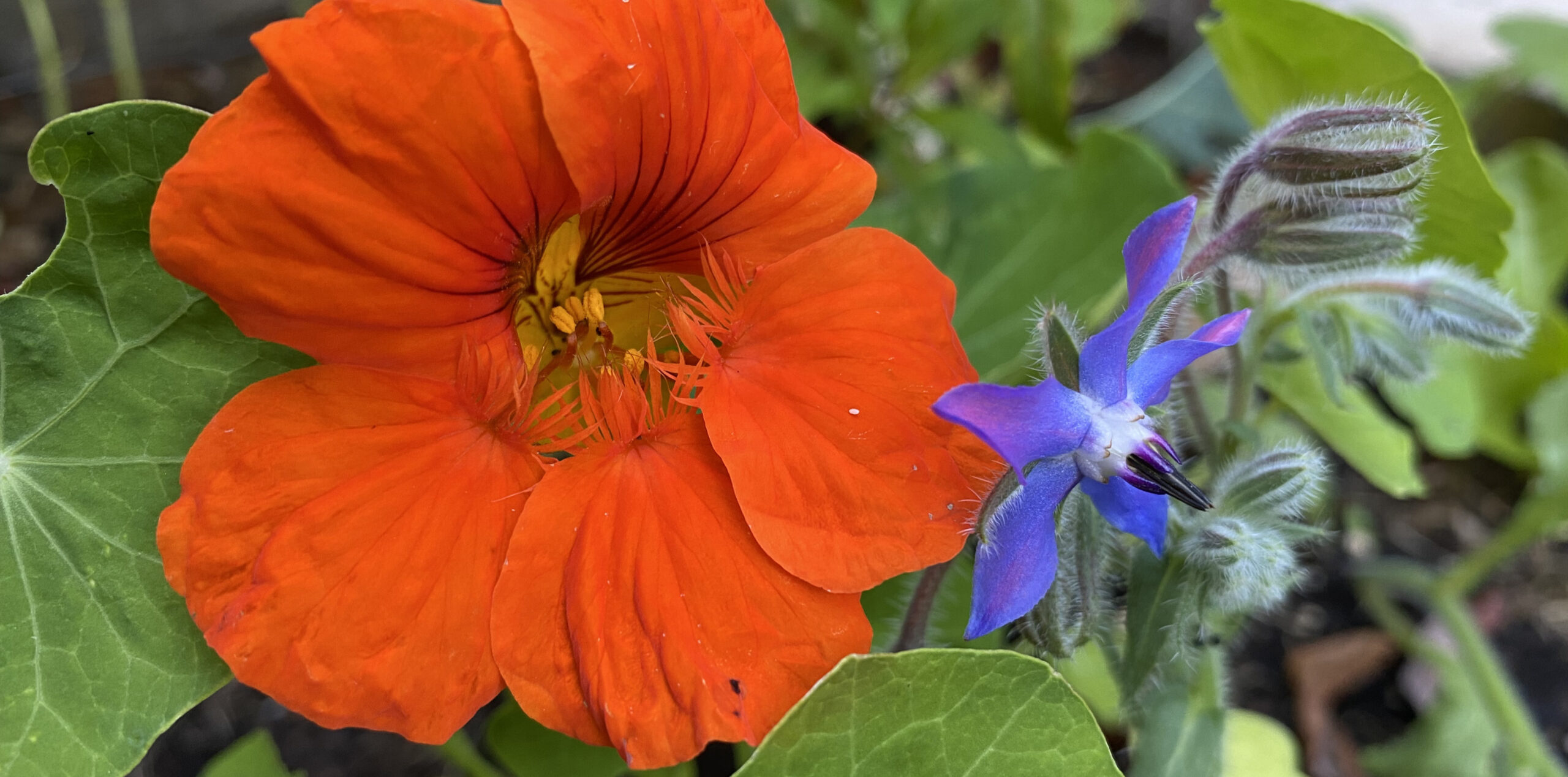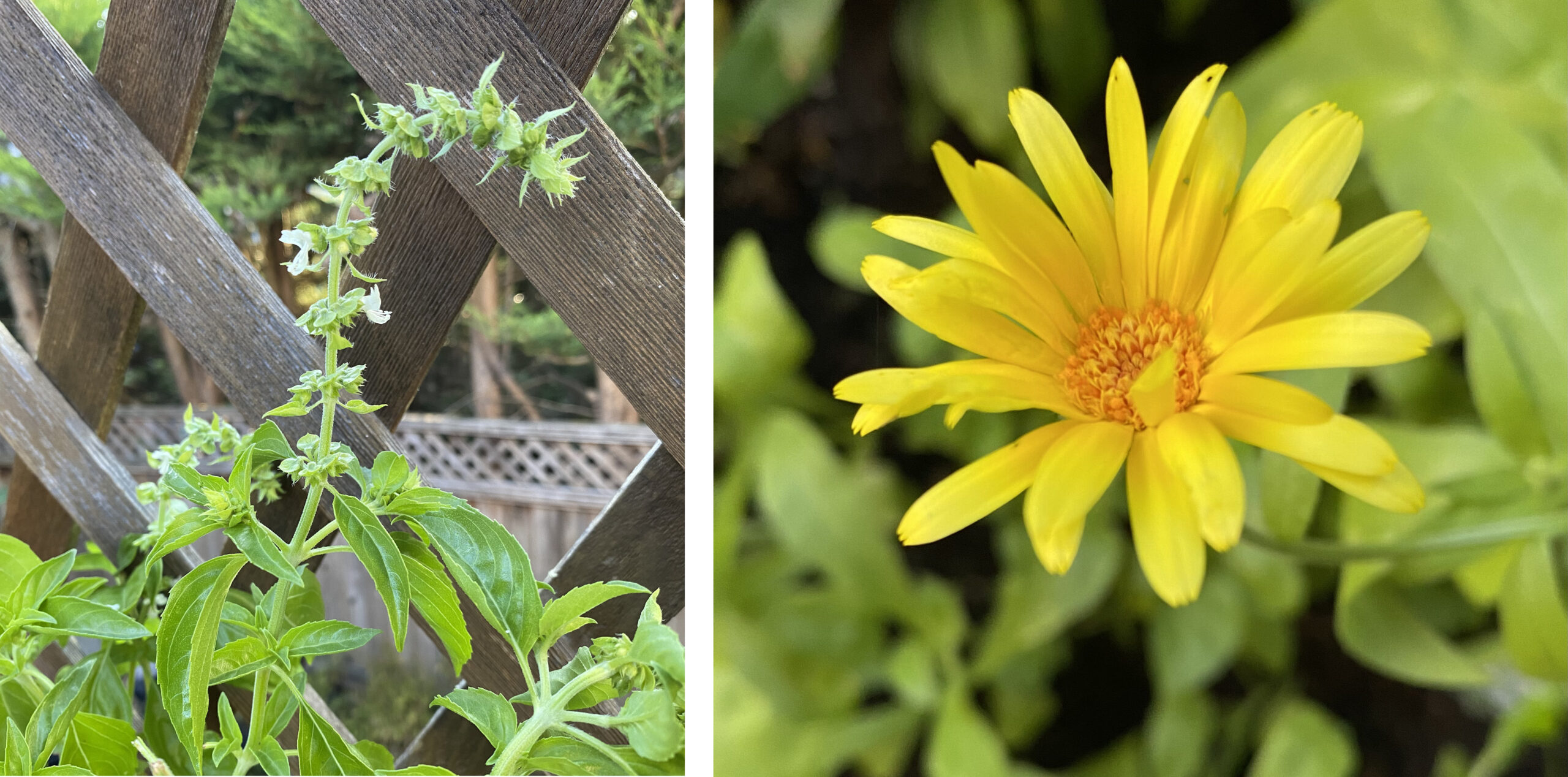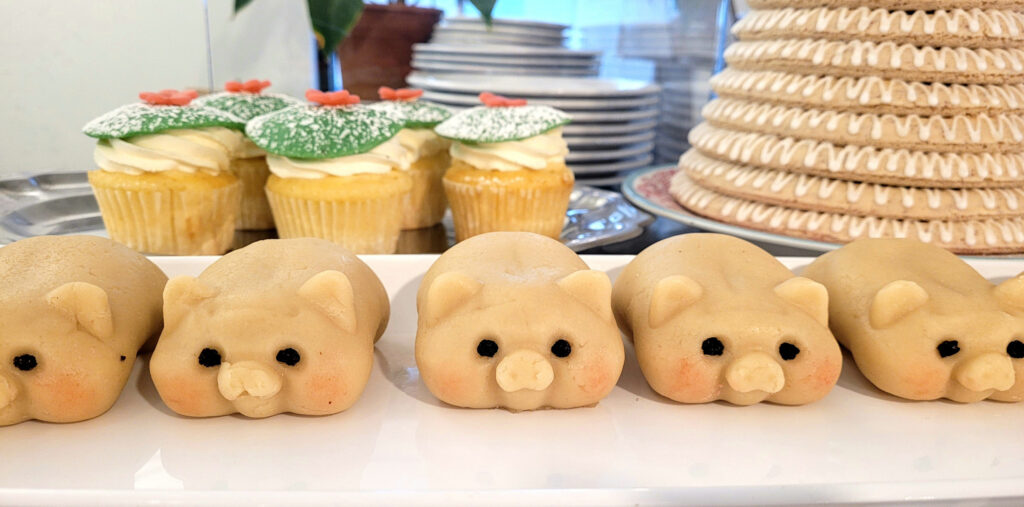story and photos by Racheal Schnarr, Pacific Horticulture College, Registered Holistic Nutritionist –
When one thinks of edible plants, rarely is it that flowers first come to mind. Adding edible flowers to the garden is a must for flower lovers and food growers alike. In addition to being aesthetically pleasing, most edible flowers are easy to grow, delicious, nutritious and produce abundant harvests.
Borage’s indigo-coloured flowers, delicate cucumber-like flavour and whimsical appearance make them a popular cocktail garnish. Both borage leaves and flowers are edible. Mid-to-late spring is the best time to direct sow borage in a spot that receives sun and partial shade, though it does prefer full sun. Borage is low maintenance and grows well in all types of soil. It self-seeds readily, so ensure you pluck the flower heads regularly. Not to worry though: should you find yourself behind in this task, young plants can be easily pulled or harvested.
Nasturtiums are often used as a trap crop for aphids and other garden pests, but they’re also a welcome addition to the kitchen. Available in various shades from crimson to golden yellow, nasturtiums lend pops of colour and a peppery taste to salads, seasonings and garnishes. Seeds can be sown in early spring, about one week after the last frost. Nasturtiums thrive in poor-to-average, well-draining soil and do well in full sun to partial shade.
Grow calendula to add to your plate and garden from spring through fall. Individual calendula petals are nature’s sprinkles, perfect for mixing into pastries or salads. Its flavour is zesty and slightly bitter, so the entire flower head is best for embellishing desserts and platters rather than eating whole. Direct sow calendula seeds in early spring and continue to sow well into summer. A spot with well-draining soil in a location with sun and partial shade is suitable for calendula. Be sure to pinch young plants back to promote bushier growth. It self-seeds regularly and grows well into the fall, providing continuous blooms for months.
Lavender has become an increasingly mainstream culinary ingredient, often added to lemonade and lattés. Lavender thrives in full sun and well-drained, fertile soil. Germinating lavender seeds can be more challenging than the flowers mentioned previously, so starter plants are a suitable and popular alternative. For maximum flavour and scent, it’s best to harvest lavender just after the flowers open in late spring and summer.
Enjoy the flowers of herb garden staples, such as basil, thyme, oregano, sage, dill, fennel, cilantro, and chive flowers for their delicate flavour. Vegetable flowers shouldn’t be forgotten: arugula, mustard, kale and peas are a handful among many that produce beautiful and tasty blooms.
When you discover how many of spring’s first blooms are a delectable snack, spring’s arrival becomes so much sweeter. If missing a green thumb but still looking for a snack, one can reach for the trees for fragrant lilac blossoms, which make a lovely addition to syrups and candy. The cruciferous-flavoured maple blossoms add crunch to fresh salads, or they can be battered and fried for a more indulgent approach. Magnolia blossoms can be pickled and used instead of traditional pickled ginger.
Note: It is imperative to correctly identify plants before consuming them. Be sure to check multiple sources and guidebooks. Consult a professional and only consume the plant if 100% identification is possible.
Resources:
Backyard Bounty; The Complete Guide to Year-round Gardening in the Pacific Northwest by Linda Gilkinson
2023 Gardening Guide by West Coast Seeds





